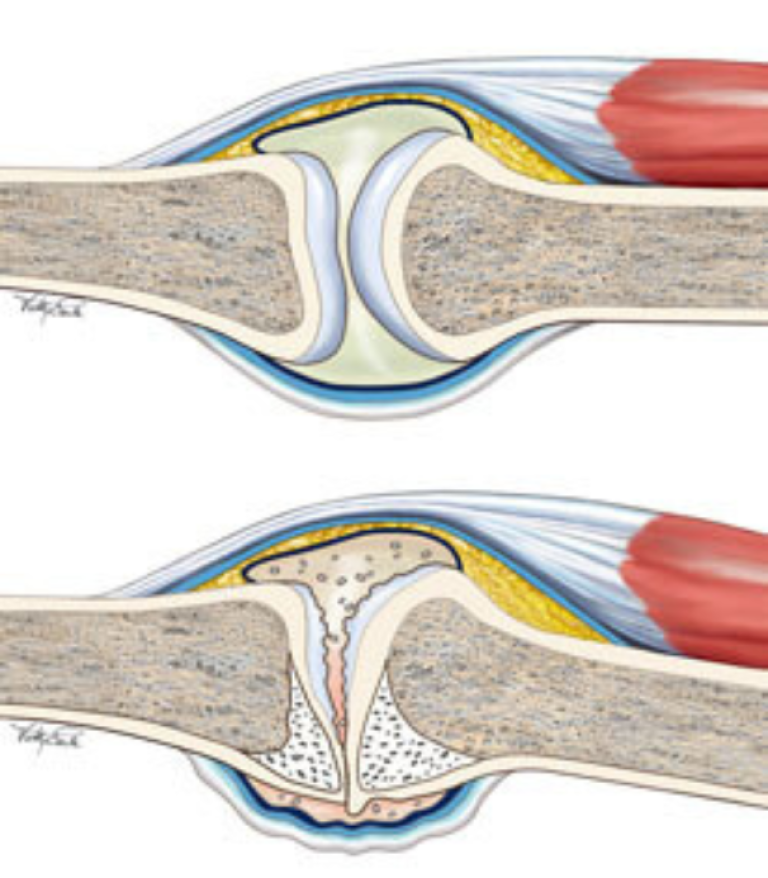Resource
Osteoarthritis
Osteoarthritis can affect any joint. It usually affects the joints that carry your body weight and is most common in the hips and knees. It is also seen in other joints, like the spine, hands, feet and shoulders.

What causes osteoarthritis?
A joint is where two bones meet. Cartilage is the protective layer that covers the end of the bones and allows the bones to move smoothly over each other. With osteoarthritis, the cartilage begins to fray and may even wear away entirely, causing your bones to rub directly against each other. In some cases, little bony growths, or spurs, develop on the ends of the bone. Other joint structures, such as the joint capsule, ligaments and surrounding muscles, are also affected. All of these changes lead to symptoms of osteoarthritis, such as joint pain and stiffness.
Signs and symptoms
Some common symptoms of osteoarthritis include:
- Pain in your joints during or after activity
- Joint stiffness, or a loss of flexibility in your joints
- Increased pain, swelling and redness of the joint when you do too much activity
- Increased cracking, creaking, or crunching when you move your joints
Osteoarthritis is different from rheumatoid arthritis. Rheumatoid arthritis is a form of inflammatory arthritis, which means that your immune system is involved. Often multiple joints are affected, and they become red, hot, swollen and painful. Talk to your doctor if you do not know what type of arthritis you have.
Risk factors
Age
Osteoarthritis does not result from aging, but your chances of developing the disease increase as you age.
Obesity
Excess weight puts unnecessary strain on load-bearing joints like hips and knees and causes more inflammation.
Other types of arthritis
Other joint diseases can damage joints, leaving them susceptible to osteoarthritis (i.e. rheumatoid arthritis).
Heredity
How your joints fit together at birth may determine whether or not you develop osteoarthritis later in life.
Injury and repetitive strain
Old injuries or a lifetime of activities like heavy lifting, kneeling, or squatting can leave lasting damage.
Stages of the disease
Early stage
People in the early stage of osteoarthritis may feel a slight ache in their joints with certain activities, such as climbing stairs or sitting down.
Advanced stage
In more advanced stages, people may feel pain while resting or putting weight on the joint. When the joint is damaged, difficult to move or painful, surgery is sometimes helpful.
Not all people will progress to the advanced stage of osteoarthritis, and not all will have surgery.

